Tech
Realme GT 2 Pro review: A winning combo of style and substance – Android Authority

Realme GT 2 Pro
The Realme GT 2 Pro isn’t the most feature-packed phone in its price range, and some notable omissions hurt its broader appeal. However, there is real value to be found here, especially for performance enthusiasts and media lovers on a budget. The reliable cameras round out a refreshingly designed and refreshingly affordable flagship-tier phone.
Realme’s product lineup has been increasingly looking northwards in its feature set and, true to form, prices have been inching up as well. The Realme GT 2 Pro is the nascent brand’s latest play at vying for a share of the coveted premium smartphone space. While value for money lies at the core of the company, it takes an extra degree of polish to successfully retail a phone that competes against much more established competition. Does the Realme GT 2 Pro successfully balance specs with value or does it fall short of the mark? Find out in the Android Authority Realme GT 2 Pro review.
What you need to know about the Realme GT 2 Pro
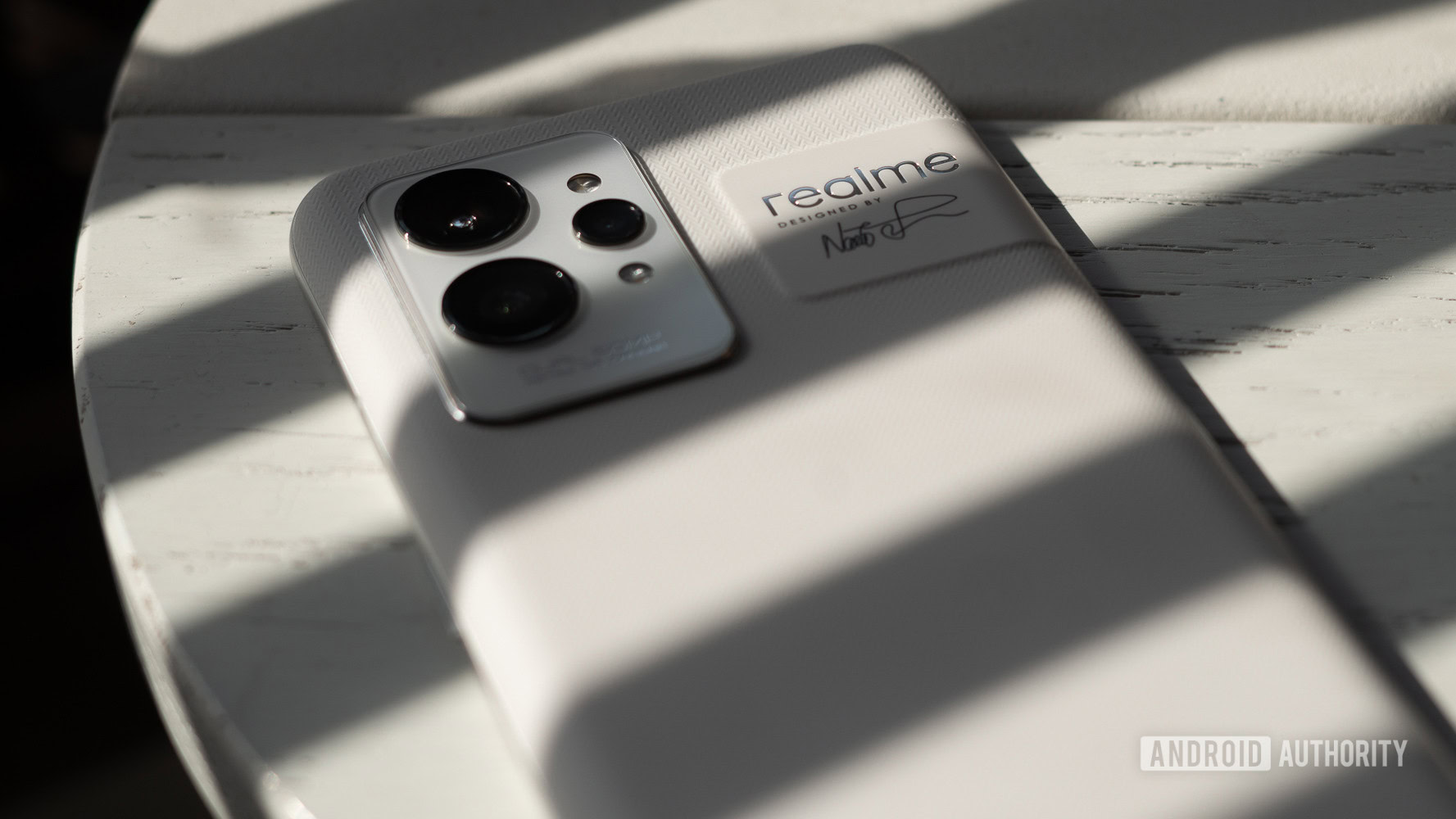

Dhruv Bhutani / Android Authority
- Realme GT 2 Pro (8GB/128GB): €749 / Rs. 49,999 (~$660)
- Realme GT 2 Pro (12GB/256GB): £699 / €849 / Rs. 57,999 (~$770)
The Realme GT 2 Pro sits right at the top of the Shenzhen-based company’s product portfolio. In fact, Realme calls the GT 2 Pro its most premium flagship device yet. The spec-sheet backs up that claim with all the core essentials that you’d expect from a high-end phone, with some cut corners to hit an aggressive price point.
You’ll find 2022 flagship standards like a Snapdragon 8 Gen 1 processor, oodles of RAM going all the way to 12GB, as well as an innovative design that makes use of exotic materials like bio-polymer. Realme has even tossed in premium Gorilla Glass Victus glass on top of a flat display.
What you won’t find are trimmings like wireless charging or an IP rating. Elsewhere, the camera setup has a triple camera array but does not include a telephoto sensor for zoom shots. Instead, Realme has included microscope camera for super-macro photography. The phone ships in three colors: Paper White, Paper Green, and Steel Black. While the first two color options get the new bio-polymer material, the black variant sticks to glass.
Related: The best budget phones
The Realme GT 2 Pro is priced starting at €749 in Europe for the base model with 8GB of RAM and 128GB of storage. The higher-end variant with 12GB of RAM and 256GB storage — the only variant available in the UK — will cost you a bit more. European buyers can pick up the phone from Realme.com or via Amazon, while those in India can also find it at Flipkart.
What’s good?
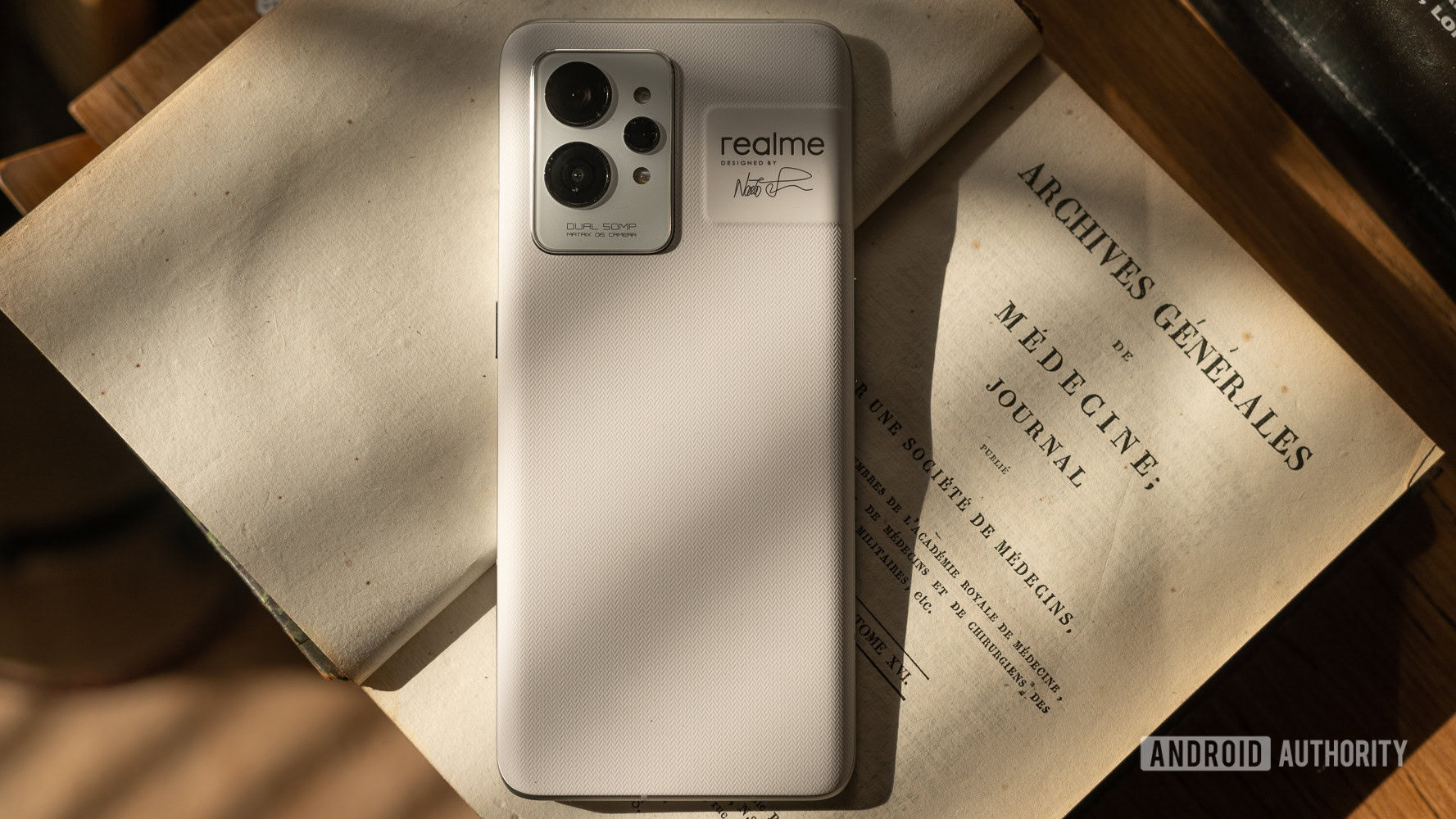

Dhruv Bhutani / Android Authority
The Realme GT 2 Pro is seriously good-looking. The phone pulls off its head-turning looks through the use of innovative materials like the aforementioned bio-polymer back and muted shades that accentuate the rounded edges and corners beautifully. Realme claims that the back panel was inspired by paper. I can’t really see the inspiration in the hedge-like pattern but the materials feel great in the hand and are a nice change from Realme’s usual glut of gloss-heavy models. The matching silver frame also helps elevate the look and feel of the phone. As an added bonus, the matte finish back is resilient to scratches and offers excellent grip.
The bio-polymer material used here is a nice change from the glut of gloss-heavy glass and metal designs.
The 6.7-inch QHD+ 120Hz OLED screen is yet another stand-out feature of the Realme GT 2 Pro. It’s been a hot minute since flat displays got popular again, and the use of one on the GT 2 Pro helps the phone stand apart from many alternatives. It’s not just about aesthetics though, as the flat display helps avoid any errant distortion or color variation around the edges (it also makes installing a screen protector a whole lot easier).
The panel displays excellent color accuracy when set to the natural color profile, and peak brightness is more than sufficient for outdoor use. Additionally, the adaptive refresh rate assists battery longevity. I measured the refresh rate going down as low as 10Hz when sitting idle. There’s an in-display fingerprint scanner to be found here as well that I found to be amongst the best in its class. Instant unlocks, no complaints.
Adding to the multimedia potential of the phone are surprisingly good stereo speakers. There’s an obvious skew towards the bottom-firing speaker. However, the sound reproduction is anything but tinny with full-sounding output and even some bass on the off chance you decide to host a rave with your phone. Cranking it all the way to the top can introduce a bit of distortion, but it’s not too bad all things considered. There’s no headphone jack here, but you do get all the most popular Bluetooth codecs including aptX HD and LDAC support.
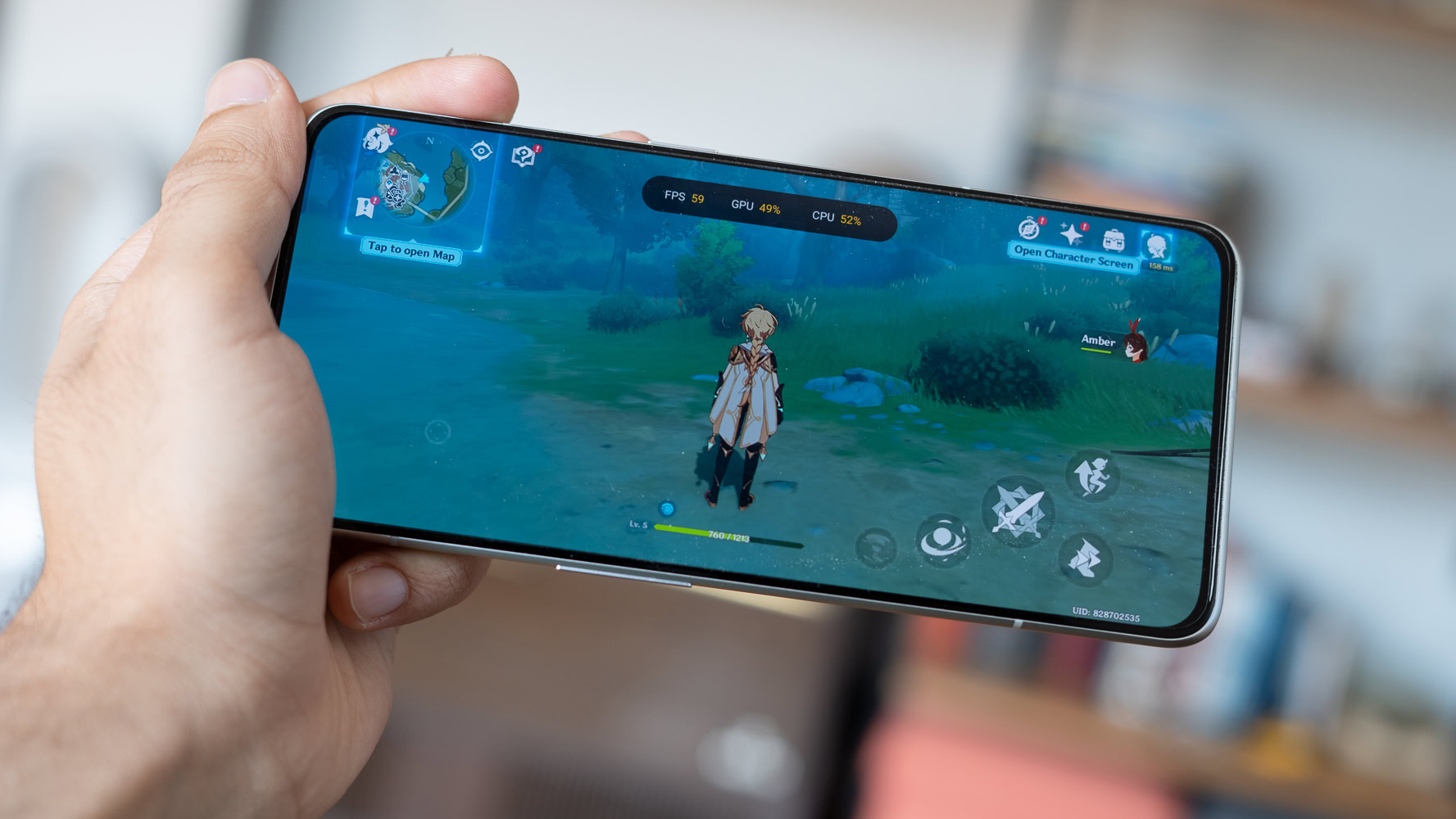

Dhruv Bhutani / Android Authority
Performance is all-around excellent. A lot of that comes down to the powerful Snapdragon 8 Gen 1 chipset, but keeping the phone noticeably cool under extended use points to thoughtful engineering. We observed that performance in demanding titles like Genshin Impact was notably better than on recent hardware like the OnePlus 10 Pro. The phone consistently maintained frame rates in the high 50s, and never went above a warm but comfortable 43°C (109°F). It’s impossible to verify Realme’s claims of a larger than usual cooling solution without taking the phone apart, but whatever is under the hood is clearly doing its job. The phone not only hits high levels of peak performance but manages to sustain them over long periods of time. Benchmarks aren’t the be-all and end-all of performance testing, but the Realme GT 2 Pro does just fine there as well, though the GPU scores in 3DMark did fall behind other Snapdragon 8 Gen 1 devices.
The Realme GT 2 Pro runs cooler and smoother than alternatives like the OnePlus 10 Pro.
Most importantly, Realme UI has come a long way in ironing out inconsistencies in performance across the user experience. There’s an inherent smoothness to the interface and I didn’t spot any jitters barring the occasional frame drop. Realme is even promising three years of updates and four years of security patches. This isn’t on the same level as Google or Samsung, but it’s a solid long-term guarantee. It’s not all perfect on the software front though, and we’ll come to that in a minute.
The Realme GT 2 Pro isn’t the fastest charging phone around, but 65W charging using the included brick is still rapid. In our testing, it took about 34 minutes to top up the phone. I found battery life to be satisfactory, with my use case involving social media, texting, and emails. I averaged six hours of screen-on time despite heavier than usual use during the testing period. The GT 2 Pro also displayed very good battery optimization while gaming and 45 minutes of the power-hungry Genshin Impact only took a 10% bite out of the battery life. Not bad.
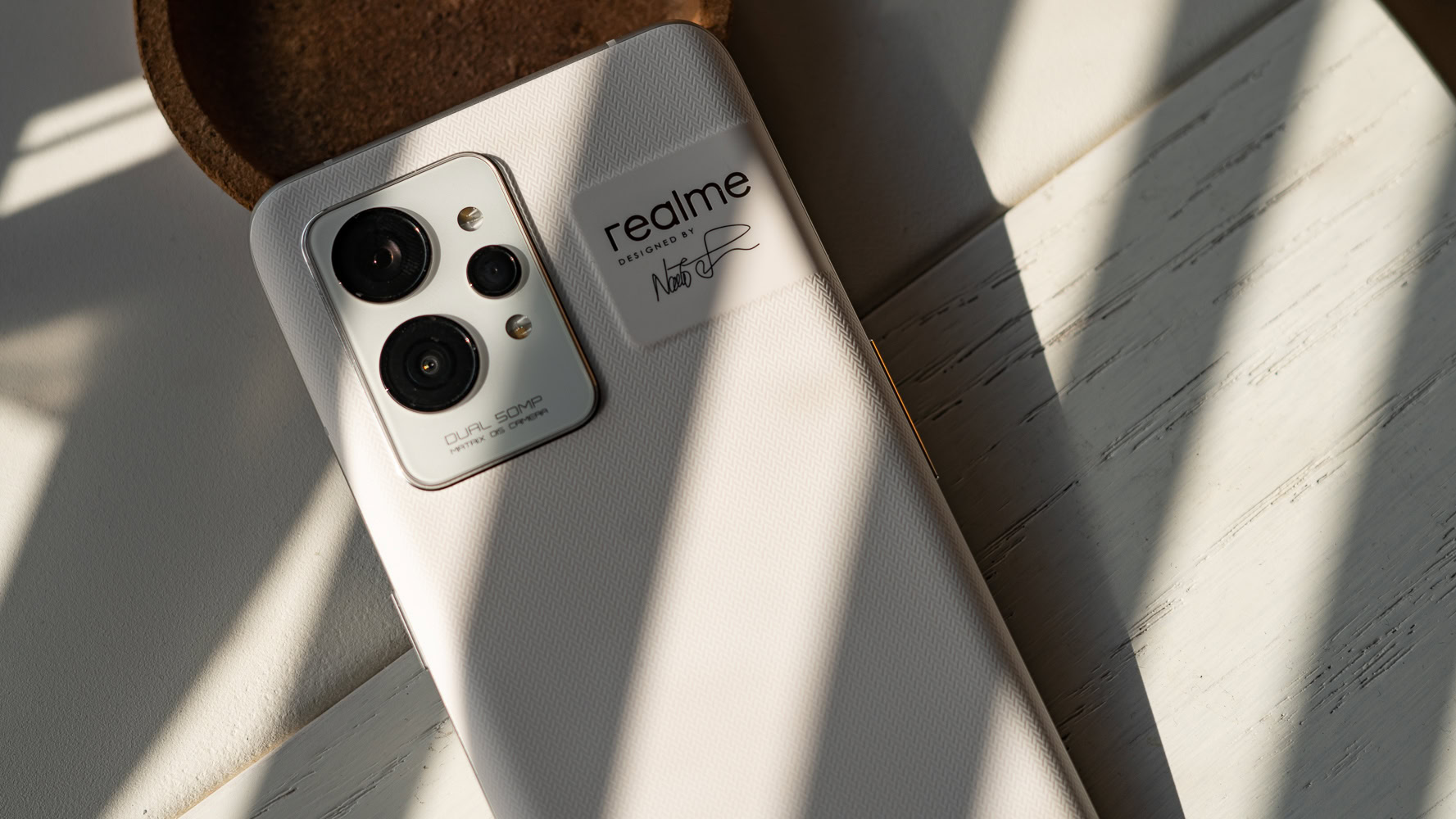

Dhruv Bhutani / Android Authority
The Realme GT 2 Pro also proved to be a surprisingly good performer on the imaging side. The primary sensor is the Sony IMX766 that we’ve seen on the OnePlus Nord 2 and the OnePlus 9RT. This is also the same sensor that we saw earlier on the underwhelming Realme 9 Pro Plus except, this time, Realme has significantly improved the processing. The dynamic range is astounding, and unless you get down to pixel peeping, noise levels and fine grain are kept tightly in control. HDR performance has improved by leaps and bounds. The phone also does a very good job at low-light images which are further enhanced when shooting in night mode.
The Realme GT 2 Pro’s camera setup punches above its weight and is tough competition for the likes of OnePlus.
Results from the ultrawide sensor are predictable. There’s a drop in sharpness when compared to the primary camera. However, colors remain true to life and there’s a very good amount of detail, even when zoomed in. The 150-degree frame of view, however, isn’t something I expect to get much use out of. The barrel distortion around the edges is a creative effect at best accompanied by a significant drop in detail.
You can check out a range of images taken by the Realme GT 2 Pro in our camera gallery further into this review, or take a closer look at the full-resolution camera samples at the Google Drive link here.
Low resolution aside, the microscope camera is fully capable of capturing interesting-looking images. I’m not convinced it was a good trade-off against a more traditional third camera, but the implementation is effective, to say the least. The default shooting mode is set to 20x, which is where you’ll get the sharpest images aided by the autofocus motor. It is possible to digitally zoom in further to 40x, but the results are too soft to be usable.
The Realme GT 2 Pro’s imaging chops extend to video capabilities as well. The camera captures silky smooth stabilized video at 4K/60fps. I observed that the camera bumped up saturation levels noticeably. However, the level of detail is excellent here. In fact, the bitrate is high enough to ensure usable results even in less than perfect light.
What’s not so good?
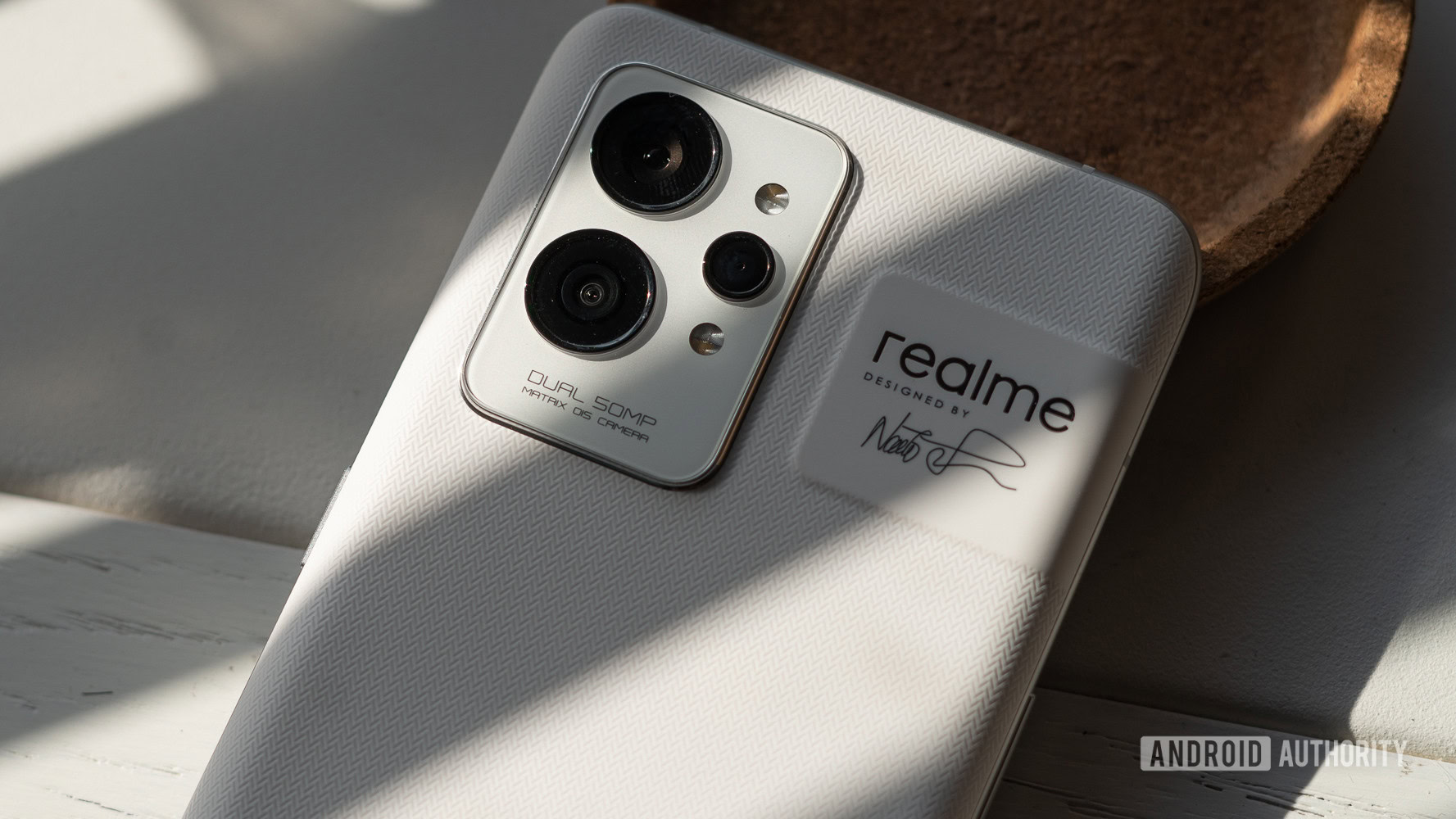


Dhruv Bhutani / Android Authority
There’s a lot to like about the design of the Realme GT 2 Pro. The heavy-handed use of branding isn’t one of them. I’m all for paying homage to the designer of the phone but, combined with the Realme logo as well as camera branding, it comes across as a bit much.
Realme UI 3.0 is let down by the sheer amount of pre-installed bloatware.
The astounding amount of bloatware on the phone also makes it less than appealing to use. I counted well over 25 third-party apps pre-installed on the phone, outside of essential apps and Google’s suite. Most of these can be removed, but it certainly doesn’t make for a great initial experience. Thankfully, I haven’t come across any advertisements just yet.
For all the positives about the cameras on the Realme GT 2 Pro, it is also hard to ignore the lack of a telephoto sensor. Moreover, the portrait mode on the Realme GT 2 Pro is particularly bad. Edge detection, both from the rear and front cameras, was amongst the worst I’ve come across in 2022.
Finally, the lack of wireless charging or any manner of splash resistance is quite disappointing. I get that the phone is built to hit a low price point, but several of the phone’s direct rivals managed to include both.
Realme GT 2 Pro camera samples
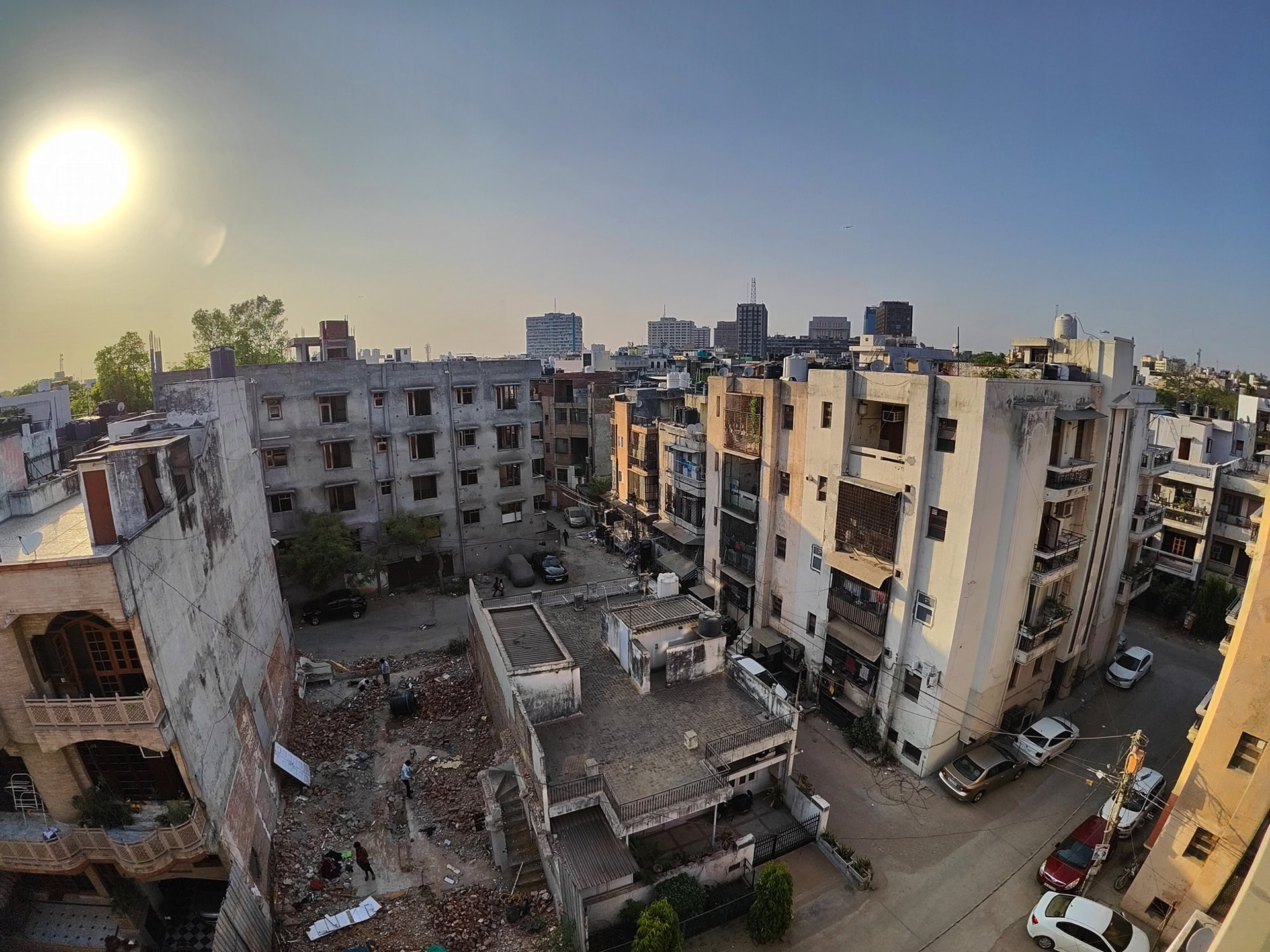

Dhruv Bhutani / Android Authority
150-degree field of view


Dhruv Bhutani / Android Authority
Realme GT 2 Pro specs
| Realme GT 2 Pro | |
|---|---|
|
Display |
6.7-inch |
|
Chipset |
Qualcomm Snapdragon 8 Gen 1 (4nm) |
|
GPU |
Adreno 730 |
|
RAM |
8/12GB LPDDR5 |
|
Storage |
128/256GB UFS3.1 |
|
MicroSD |
No |
|
Battery |
5,000mAh |
|
Camera |
Rear:
50MP f/1.8 Sony IMX766, OIS 50MP f/2.2 ultrawide (150-degree) 3MP f/3.3, microscope lens with 40x magnification Video (rear): Front: Video (front): |
|
IP Rating |
N/A |
|
Audio |
Dual stereo speakers |
|
Connectivity |
Dual nano-SIM slots |
|
Sensors |
Magnetic induction, light, proximity, gyro, acceleration |
|
Security |
In-display fingerprint sensor |
|
Software |
Android 12 |
|
Colors |
Paper White, Paper Green, Steel Black |
|
Dimensions |
163.2 x 74.7 x 8.2mm
|
|
Weight |
189g |
Realme GT 2 Pro review: Should I buy it?
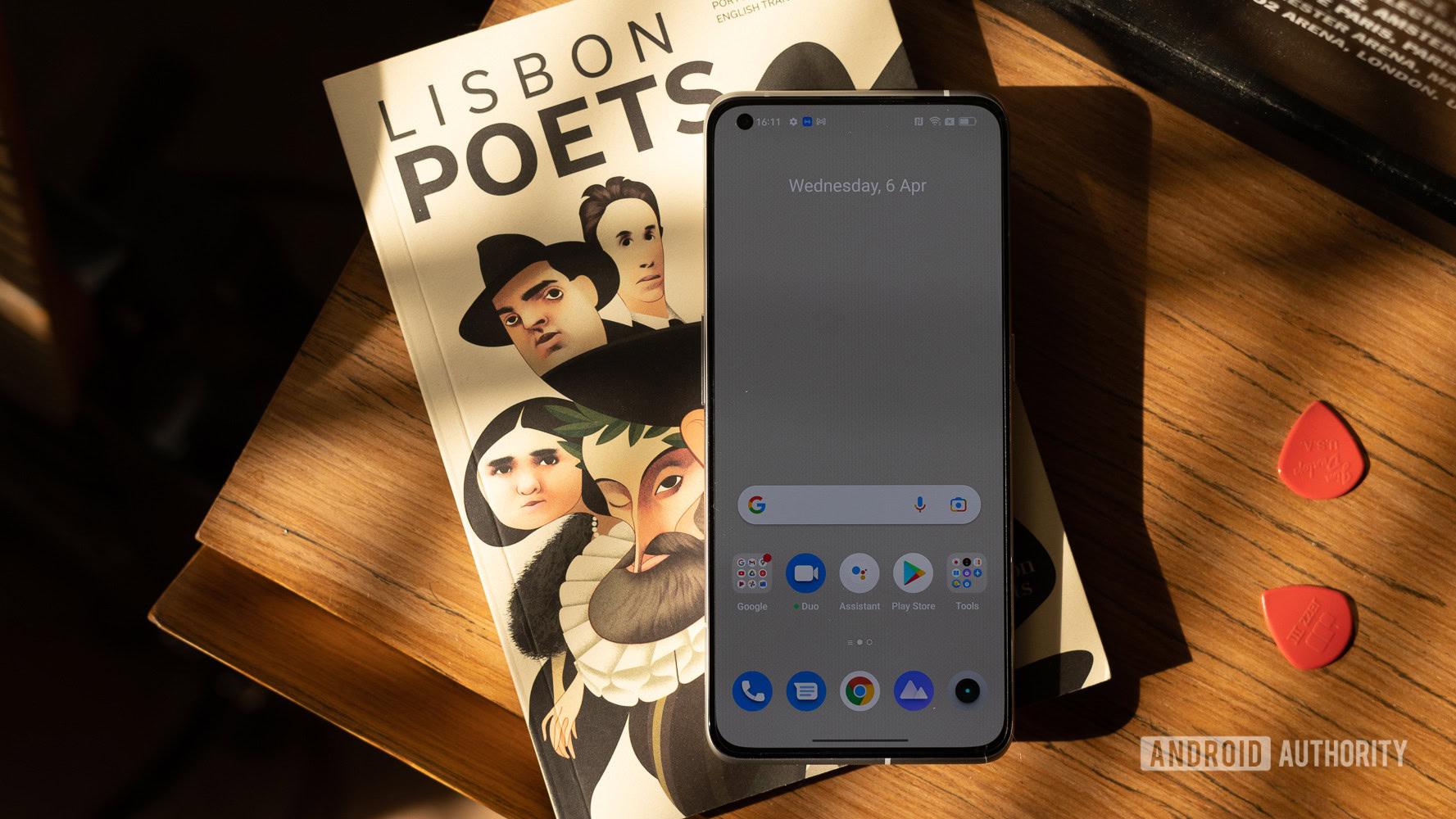

Dhruv Bhutani / Android Authority
The Realme GT 2 Pro is a refreshing device from the youngest BBK brand. It stands out amongst a sea of familiar smartphones with predictable upgrades by making meaningful changes. The design and materials used here genuinely feel great, all while ensuring that basics like performance, battery life, and camera performance are on point. It lacks bells and whistles like an IP rating and wireless charging, but there’s still a lot of value to be found here.
More importantly, the phone drastically undercuts affordable flagships like the OnePlus 10 Pro (£799) while giving users much of the same feature set, barring a few extras like a telephoto sensor and wireless charging.
However, the Realme GT 2 Pro is far from the only game in town even at its reduced price point. Those looking for a more well-rounded experience might want to take a peek at the Samsung Galaxy S21 FE (£699) which packs an older generation processor, but pairs it with a trifecta of camera sensors that includes a dedicated telephoto camera. You also get wireless charging, an IP rating, and four years of software upgrades to look forward to (plus five years of security patches).
Elsewhere, there’s the Google Pixel 6 (£599) that again nets you an IP rating, wireless charging, and one of the best cameras amongst Android devices (albeit also without a dedicated zoom lens), as well as software support for three years and five years of security updates. It’s also extremely competitively priced, coming in at £100 less than Realme’s best.
Buyers in India will want to consider some of 2021’s flagship killers like the OnePlus 9 Pro or the Iqoo 9, both of which include high-end processors and additions like wireless charging or even 120W charging support.
That said, the Realme GT 2 Pro deservedly earns a recommendation for trying out something a little different and succeeding.



Realme GT 2 Pro
The Realme GT 2 Pro is the company’s premium flagship offering. It combines 2022 flagship specs with a focus on design while still sticking to its core ethos of value for money.
Top Realme GT2 Pro questions and answers
Q: Is the Realme GT 2 Pro waterproof?
A: The Realme GT 2 Pro does not have an IP rating or any claimed splash resistance.
Q: Does the Realme GT 2 Pro support wireless charging?
A: No, the Realme GT 2 Pro does not include any wireless charging support.
Q: Is the Realme GT 2 Pro 5G compatible?
A: The Realme GT 2 Pro has 5G support on both SIM card slots and is compatible with sub-6GHz networks. There is no support for mmWave 5G though this should not be an issue for its target markets.
Tech
Our Guide To The Best Inflatable Hot Tubs In Canada In 2024 (And Where To Get Them) – CTV News


Hot tubs are amazing things—they can help you relax, help you warm up, and help your muscles recover from injury or intense activity. And if you’re a hot tub lover already, you probably know all of these things for yourself already. But maybe you’re not ready for the permanence (or high price tag) that comes along with a standard hot tub.
Inflatable hot tubs are the next best thing! They’re more affordable than traditional hot tubs, easy to set up and take down as the seasons change, and you can bring them with you easily when you move or go up to the cottage.
If you think an inflatable hot tub is the next stop on your home improvement journey, we’re totally on board. And we’d love to help you choose the right one. Inflatable hot tubs aren’t all created equal, and it can be tough to know what to look for. Things like price, shape, overall size, seating capacity, number of jets, and included accessories will all differ.
This comprehensive guide will investigate the best inflatable hot tubs in Canada right now and outline the criteria you should consider while making your purchase decision. Let’s dive right into our top five products.
The Best Inflatable Hot Tubs Right Now
Our Top Pick for The Best Inflatable Hot Tub
Bestway 54295 SaluSpa AirJet Honolulu 6-Person Inflatable Hot Tub Review
What We Think of the Bestway 54295 SaluSpa AirJet Honolulu 6-Person Inflatable Hot Tub
The Bestway 54295 SaluSpa AirJet Honolulu 6-Person Inflatable Hot Tub is our top overall pick for a variety of reasons. For one thing, it’s one of the only inflatable hot tubs out there that actually seats the number of people it’s supposed to—that’s right, you can put six people in this tub and everyone will be comfortable. This is a rare thing.
Like most Bestway tubs, this option has both the ChemConnect system for maintaining chlorine levels and the FreezeShield tech to protect all of the inner workings from cold weather. You’ll appreciate these things a lot. We’re also big fans of the cup holders that are right next to the control panel and the fact that you can program this tub 40 days in advance. That’s just plain cool.
There’s only one change we’d make to this option if we could, and that’s rounding out the accessories. You only get a handful of items with this one, and we’d prefer that you get extras like testing strips, a thermal ground cloth, maybe a filter cartridge or two… you get the idea. But in the grand scheme of things, you’re still getting a lot of value.
What Reviewers Are Saying About the Bestway 54295 SaluSpa AirJet Honolulu 6-Person Inflatable Hot Tub
Reviewers have a really high opinion of the Bestway 54295 SaluSpa AirJet Honolulu 6-Person Inflatable Hot Tub. It comfortably seats six people, the jets are great at giving a noticeable massage, the temperature stays steady for a long time, and it’s the perfect height to be used without headrests.
Bestway 54295 SaluSpa AirJet Honolulu 6-Person Inflatable Hot Tub Specifications
Bestway 54295 SaluSpa AirJet Honolulu 6-Person Inflatable Hot Tub Pros and Cons
Pros:
-
ChemConnect system (maintains chlorine balance without a floating dispenser) and FreezeShield tech
-
Digital control panel has built-in cup holders
-
Comes with a cover, a repair kit, and a filter cartridge
-
Can be programmed up to 40 days in advance
Cons:
-
Limited accessories
Our Final Thoughts on the Bestway 54295 SaluSpa AirJet Honolulu 6-Person Inflatable Hot Tub
-
Performance: 5/5
-
Usability: 4.5/5
-
Price: 4.5/5
-
Quality: 4.5/5
Overall, the Bestway 54295 SaluSpa AirJet Honolulu 6-Person Inflatable Hot Tub is incredibly well-rounded and well-priced. You won’t get a full kit of accessories, but you’ve got the essentials, and it has a bunch of helpful features that make up for those missing pieces.
Our Premium Pick
Intex 28431E PureSpa Plus Inflatable Hot Tub Review
What We Think of the Intex 28431E PureSpa Plus Inflatable Hot Tub
Where do we even start with the Intex 28431E PureSpa Plus Inflatable Hot Tub? There are so many things to share. This thing comes fully loaded, which is a treat. You’ll get two headrests, a multi-coloured LED light, an insulated cover, a thermal ground cloth, two filter cartridges, testing strips, a carry bag, a floating chlorine dispenser, and an inflation hose. Talk about value!
Its built-in hard water treatment system is another thing we love about this one. It protects your hot tub and your bathing suit and your skin… super important, right? The control panel is also great. It tilts up and down to give you a great view at all times, and it’s really straightforward. No guessing which buttons do what. The heat loss with the bubbles on is also minimal, which makes this one even more special.
We’re super happy to report that we have nothing to throw in the negatives column with this one. How awesome is that? Just a heads up, though, you will have to fork over some extra cash to make this option yours. It might be a bit of a deterrent at first, but we promise you, it’s worth it.
What Reviewers Are Saying About the Intex 28431E PureSpa Plus Inflatable Hot Tub
Reviewers are very impressed by the Intex 28431E PureSpa Plus Inflatable Hot Tub. The setup was really easy (takes less than an hour to get the tub inflated and the water in), they love the colour-changing LED, and the jets do a really great job of producing massaging bubbles without reducing the water temperature by much. They have no complaints about this one at all.
Intex 28431E PureSpa Plus Inflatable Hot Tub Specifications
Intex 28431E PureSpa Plus Inflatable Hot Tub Pros and Cons
Pros:
-
Has a built-in hard water treatment system
-
Comes with two headrests, an insulated cover, a multi-coloured LED light, two filter cartridges, a thermal ground cloth, a carry bag, testing strips, a floating chlorine dispenser, and an inflation hose
-
Control panel is well laid out and easy to use
-
Doesn’t lose heat very quickly even with bubbles on
Cons:
Our Final Thoughts on the Intex 28431E PureSpa Plus Inflatable Hot Tub
-
Performance: 5/5
-
Usability: 5/5
-
Price: 3.5/5
-
Quality: 4.5/5
Overall, the Intex 28431E PureSpa Plus Inflatable Hot Tub is a pretty flawless option. Whether you want a hot tub to share with your family, your friends, (or to keep it all to yourself), you’ll love everything about this one. Our favourite things? The colour-changing light and the headrests, of course.
Our Budget Pick
Intex SimpleSpa 4-Person Inflatable Hot Tub Review
What We Think of the Intex SimpleSpa 4-Person Inflatable Hot Tub
The Intex SimpleSpa 4-Person Inflatable Hot Tub has more to offer than just a super affordable price tag. It’s one of the fastest tubs to set up—inflation only takes 20 minutes, and once it’s full of water, you’ll be able to enjoy it at max temp in less than a day. Some tubs take more than 48 hours to heat up!
This tub also comes with all of the accessories you’ll need to start enjoying it right away—an insulated cover, a thermal ground cloth, a floating chlorine dispenser, two filter cartridges, a test strip, an inflation hose, and a carry bag are all included! Our favourite feature, though, is the control panel. It’s simple and easy to use, it has a protective cover, and it tilts!
Unfortunately, no hot tub can be perfect, and this one does have a couple of features that fall short. Although it generally does a great job heating the water, it isn’t so effective in temperatures below 10ºC. You’ll need an insulated space for that. Also, although it’s advertised as a four-person tub, it’s really better suited to two. Unless you don’t mind squishing.
What Reviewers Are Saying About the Intex SimpleSpa 4-Person Inflatable Hot Tub
Reviewers are pretty happy with the Intex SimpleSpa 4-Person Inflatable Hot Tub for the price. Most people find that even three people is pushing the capacity a bit, and it has trouble reaching the higher temperatures in the colder months unless it’s in an insulated space. The setup is really easy, though, and they love the control panel. The relaxing bubbles are a big hit, too.
Intex SimpleSpa 4-Person Inflatable Hot Tub Specifications
Intex SimpleSpa 4-Person Inflatable Hot Tub Pros and Cons
Pros:
-
Has a very simple, tilt-adjustable, and user-friendly control panel
-
Comes with an insulated cover, two filter cartridges, thermal ground cloth, floating chlorine dispenser, inflation hose, test strip, and carry bag
-
Ready for water in only 20 minutes
-
Heats up faster than many other inflatable hot tubs
Cons:
Our Final Thoughts on the Intex SimpleSpa 4-Person Inflatable Hot Tub
-
Performance: 4.5/5
-
Usability: 4/5
-
Price: 5/5
-
Quality: 4/5
All in all, the Intex SimpleSpa 4-Person Inflatable Hot Tub is our favourite budget-friendly option right now. It might not actually fit four people comfortably, but it’s still got a lot going for it. The highlights? The super user-friendly control panel and one of the fastest heat-up times.
Also Great
Bestway 54155E Hawaii Air Jet Inflatable Outdoor Spa Review
What We Think of the Bestway 54155E Hawaii Air Jet Inflatable Outdoor Spa
The Bestway 54155E Hawaii Air Jet Inflatable Outdoor Spa is one of the easiest options to maintain, and that’s one of the reasons we like it so much. Instead of a floating chlorine dispenser, this one has a ChemConnect system that looks like a little nozzle inside the tub—it maintains the chlorine levels for you. It has an integrated water filtration system too. How awesome is that?
We really like the FreezeShield technology too. It protects all of the interior components in cold weather—not only does this keep them in proper working order for longer, but it also means you can enjoy your hot tub safely in all weather conditions. This tub also has some of the best jets out there—they actually massage you (instead of just pretending like they do).
There are a few things we’d change about this hot tub if we could. It claims to seat four people, but that’s a bit of an exaggeration. It can fit four adults, but you won’t be comfortable—it’s really much better suited to life as a two-person hot tub. The control panel design also leaves something to be desired, as do the assembly instructions. They definitely could have been done better.
What Reviewers Are Saying About the Bestway 54155E Hawaii Air Jet Inflatable Outdoor Spa
Reviewers have mostly good things to say about the Bestway 54155E Hawaii Air Jet Inflatable Outdoor Spa. Almost all of them had a hard time with assembly because the instructions were entirely unhelpful, but once it was set up, things got better. It took just over a day to be ready, and they’re all happy with how well it maintains the temperature and how powerful the jets are.
Bestway 54155E Hawaii Air Jet Inflatable Outdoor Spa Specifications
Bestway 54155E Hawaii Air Jet Inflatable Outdoor Spa Pros and Cons
Pros:
-
Has an integrated water filtration system
-
FreezeShield tech helps protect the inner components from freezing in cold weather
-
Shoulder/neck jets do a great job of massaging effectively
-
ChemConnect system maintains a safe chlorine level without a floating dispenser
Cons:
-
Control panel is a bit busy and can be hard to read in certain light
-
Four-person seating capacity can be a bit tight—better suited to two people
-
Assembly instructions are awful
Our Final Thoughts on the Bestway 54155E Hawaii Air Jet Inflatable Outdoor Spa
-
Performance: 5/5
-
Usability: 4/5
-
Price: 5/5
-
Quality: 4/5
Overall, the Bestway 54155E Hawaii Air Jet Inflatable Outdoor Spa has a lot to offer. It’s designed for minimal effort and maximum enjoyment, so you’ll be able to get to the relaxation part really fast. It’s better suited to two people rather than four, but you can squish in the extra bodies if needed.
Intex 28427E PureSpa Bubble Massage Inflatable Spa Set Review
What We Think of the Intex 28427E PureSpa Bubble Massage Inflatable Spa Set
There are a lot of reasons why we like the Intex 28427E PureSpa Bubble Massage Inflatable Spa Set. The control panel is one of the main ones—it’s rechargeable, tilt adjustable, protected by a plastic cover, and incredibly straightforward to use. How does it get better than that? We’re also really happy with how durable it is, and it’s sturdy enough for year-round use. Plus, you can sit on the edges without dipping.
You get a lot of accessories included with the purchase price with this one, folks. Your inflation hose, insulated cover, test strips, chlorine dispenser, filter cartridges, thermal ground cloth, and even a carry bag are all included. This hot tub has a built-in hard water filtration system too, so you won’t be soaking in hard water or worrying about complicated maintenance. Thank goodness.
We only have two minor concerns to share with you before we wrap up. You should be prepared for more heat loss when the bubble jets are running—this isn’t ideal, we know, but there’s nothing to be done about it. Also, there are no seats included with the kit, so you’ll need to purchase them separately if you want that extra level of comfort.
What Reviewers Are Saying About the Intex 28427E PureSpa Bubble Massage Inflatable Spa Set
Reviewers are very happy with the Intex 28427E PureSpa Bubble Massage Inflatable Spa Set. It seats four people very comfortably and can fit an extra two people without too much squishing. It only takes a couple of days after setup to reach its maximum temperature, and it stays warm for a while. It does lose heat faster with the bubbles on, but most people don’t mind too much.
Intex 28427E PureSpa Bubble Massage Inflatable Spa Set Specifications
Intex 28427E PureSpa Bubble Massage Inflatable Spa Set Pros and Cons
Pros:
-
Has a built-in hard-water treatment system
-
Comes with three-way test strips, a carry bag, two filter cartridges, a floating chlorine dispenser, a thermal ground cloth cover, and an inflation hose
-
Control panel is very user-friendly, rechargeable, tilt-adjustable, and has a plastic cover to protect it
-
Incredibly durable and safe for use in all seasons
Cons:
Our Final Thoughts on the Intex 28427E PureSpa Bubble Massage Inflatable Spa Set
-
Performance: 4.5/5
-
Usability: 5/5
-
Price: 4/5
-
Quality: 4/5
Overall, the Intex 28427E PureSpa Bubble Massage Inflatable Spa Set is a pretty great choice if you don’t mind spending a little extra on the tub and purchasing seats separately. You can use this one all year round, and it’s got one of the best control panels around.
How to Properly Choose Your Inflatable Hot Tub
Price
Many inflatable hot tubs can be purchased for less than $1,200, and most of these will be perfectly suited to the average homeowner. At their cheapest, they can approach $700, and at their most expensive, they can cost nearly $2,000. In general, more expensive models will be larger, will come with more accessories, and will be more durable.
Seating Capacity
Most inflatable hot tubs will seat either four or six people. This should be considered a general guideline instead of a hard and fast rule, though, because sometimes meeting that seating capacity means squishing all your friends/family members together.
Water Capacity
The water capacity should be considered along with the seating capacity. Not all six-seaters are created equal, and the same goes for every other size. For example, one six-seater might have a water capacity of 1100 litres, another might be less than 900 litres. Obviously, this makes a big difference in how much space there actually is to go around.
Number of Jets
Every inflatable hot tub will have bubble jets, but the number and power of those jets will vary. You’ll want to check reviews to make sure the jets are as strong or as soft as you’d prefer them to be.
Disclaimer: The prices displayed are accurate at the time of publication. We’ll do our best to keep them as up-to-date as possible, but you may see slight changes. The products in this list are ranked by independent third parties. Rankings are based on both reviews and independent testing.
Tech
Empathy as a Key Success Factor for High Performing Development Teams – InfoQ.com


Subscribe on:
Transcript
Shane Hastie: Good day, folks. This is Shane Hastie for the InfoQ Engineering Culture Podcast. Today I’m sitting down with Cassie Shum. Cassie is in East Coast, USA, New York. Cassie, welcome. Thanks for taking the time to talk to us today.
Cassie Shum: Thank you for having me. This is exciting.
Shane Hastie: My usual starting point in these conversations is just who’s Cassie?
Introductions [01:11]
Cassie Shum: Yes, let’s start with that. So hi, everyone. I’m very excited to be on this podcast. My name’s Cassie and I have been a technologist for almost 20 years now. And so one of the things that I really love about my career is the different people that I’ve been working with, the different mentors that I’ve had over the years. I give a lot of credit to Thoughtworks where I was for about 12 years of my career as a software engineer, so engineer at heart. And then throughout the years, dabbled into quite a few areas like cloud infrastructure. I did a little bit of a foray into mobile applications because I thought I was going to be a millionaire from making one app. I was wrong. And so I went back into looking more into different enterprises and really driving enterprise architecture for quite some time.
And then quite recently, about a couple years ago, I started looking around to the next area of my career and I was very excited to meet my CEO now, Molham Aref with Relational AI. And I just got super excited about the product. And I am one of these people who really like looking at what the future of technology looks like given my history, working on the tech radar at Thoughtworks and the Doppler, and really looking at the tech trends. When I heard about the product that we were doing around the data-centric architectures and how this was going to affect enterprises at scale, I had to jump on the opportunity to come and see what that was like. And it’s been just a wonderful journey, actually. Very busy and very exciting. Startup land is a bit different than my consultant background, but yes, it’s been a great journey.
Shane Hastie: This is the Engineering Culture Podcast. What are some of the key elements of an engineering culture that you’ve exposed through your career? Some of the big learnings in that space?
Multiple levels of empathy as a key element of engineering culture [03:02]
Cassie Shum: I would say I think I’ve been very, very lucky to be on multiple teams as a team member when I’ve seen very good culture and then being able to lead some of these teams in future and taking some of those learnings. So I distil it to a couple of concepts, and there’s probably a lot that you can bring out of it, but the biggest one for me that I talk about a lot is empathy. And empathy for me operates at multiple different layers. So empathy, of course, within your team in itself, how are you empathizing with your team members? How are you empathizing with your leadership? And then also how do you empathize with your customer as well? Because at the end of the day, as engineers, we are building products for a customer of some sort. That customer may be an external customer that you’re building a product for, or it may be an internal customer if you’re working on developer portals or developer tools, your customers are the engineers and the developers.
So being able to think in the shoes of who you’re developing these things for is actually quite important. So I think empathy is a massive theme of mine, and I think if we can start at that core, a lot of things trickle out from that. And so the trickling effect leads to transparency within a team, a very healthy feedback cycle within a team in itself because with that empathy, you want to know how other people are working with you and how you’re collaborating together. And then at the end of it too, if you start removing your own ego and you start thinking about how do we be successful as a team and you empathize at a team level, then if everybody does that, then, again, I think that would be a perfect culture from an engineering perspective. Now, as we all know, in reality, we have a lot of different things and constraints in place, but I think if we can get some of those core fundamentals in place, then it would be good.
Shane Hastie: Moving from a group of individuals to a well-jelled team, as a leader, how do you encourage that? How do you enable that?
Helping teams become high performing rapidly [04:57]
Cassie Shum: I would say I wish we had a lot of time in the world because then we think about the norming and the storming and really getting to know each other and things like that. I actually more want to talk about when you don’t have the time and you have to quickly iterate. As me being in a startup land right now, time is usually not on our side. So I think really to think about moving from a group of individuals and moving into a team, it’s really about an aligned goal and aligned purpose. At least if we can actually focus from a team perspective or from a company perspective, however big that group you are focusing on, everyone needs to align to some purpose or goal that you’re driving to.
And so the way I like testing that is, yes, you can say, “Hey, as a team goal, this is what we’re doing.” But repetition is a very, very useful tool in my opinion. So with many of my teams, I always say, “So what do you think our team goal is?” And I need people to repeat it back to me as well. So it’s one aspect of saying, “This is our team goal.” It’s another one everybody really embraces it to their core because then everybody will be working within their own skill set and whatever their specialty is within that team, aligning to that one goal. So I think that’s usually the core area where people are misaligned from the beginning, but we don’t fix that. We just say, “Okay, we put in another smart person and we’ll figure it out together and this will happen.” But keeping that repetition of repeating goal and what we’re trying to drive towards and what are we measuring towards is really important as a fundamental.
Shane Hastie: As you say in many organizations today, there’s not necessarily the time to go through the form, storm, norm, to get to perform. So that focus on goals, and I love the empathy, transparency, feedback, some powerful stuff there. Shifting focus a little bit. Relational AI, VP of field engineering, what’s your job?
Aspects of the VP role that enable high performance [06:57]
Cassie Shum: It depends on what day you ask me. My job actually consists of a lot of different things right now. I would say when I came into the organization, and it still holds today, is my focus or what I would say my success criteria as a leader of field is customers. So how are we pleasing our customers with our products and with our wonderful field engineering team to really hold the hands of some of our early adopters in our product and really drive to those business successes, the business criteria for the customers. So that’s definitely, I would say, a key component of my role. But then, of course, that is everybody’s goal in field engineering. But one of the things that I then focus on is the team aspects. So how do I align the field engineering teams around customer centricity? How do I work with the teams to work with each other, work with our customers, and also work with the product engineering side to really tighten all the big feedback loops.
So a really wonderful way we go about this is if we’re going in front of the customer, our teams will be there solutioning with our customers, understanding what their business use cases are, and then implementing our product within their ecosystem. And as we both know, every type of ecosystem, it can be a different ball of wax, so being able to get that really, really beautiful feedback loop from the customer is really important to improve our product. And so there needs to be close collaboration, close communication from our field to the product engineering team as well, so we can actually give them feedback to strengthen our product that is very applicable in front of our customers.
Shane Hastie: Thinking about engineering teams, developer experience is a big topic today. Dare I say, it feels like finally we’re giving it the attention it needs. What are some key points that organizations should consider when they do want to go into improving that developer experience and why would they bother?
Ways to improve developer experience [09:04]
Cassie Shum: We could dedicate an entire podcast to this topic, but I think I could give some high-level of thoughts that I have. I am very excited, first off to agree with you that developer experience is now something that organizations are really putting their focus on. I do think that if we focus it on the wrong way, it could actually lead to something not so great for developers and engineers. So I’ll double-click into what I mean there. So essentially if we think about measuring developer productivity or developer effectiveness, I think if the leaders don’t really have a true understanding of where their developers are spending time, where the actual churn is, and I have seen some anti-patterns where it’s like, “Oh, how many lines of code are you writing?” Or, “How many commits do you have?” And we’ve even talked through from a Dora perspective, what is the time to commit, what’s the time to release, time to fix bugs and things like that. So I think in principle, a lot of these different metrics can be useful, but they cannot be the only metric that you measure developer productivity on.
So one of the things that I think about is how do we measure end-to-end all the way from the beginning of incepting a story from a product sense, how that formulates into code and QA, and then how does that get right in front of your customer for that instant feedback, continuous delivery loop. And so measuring that churn is actually really important to think about in the holistic area of developer effectiveness. So I’ll quote a little bit around Martin’s blog recently has had a whole series around developer effectiveness from Tim Cochran and team at Thoughtworks, and they talk about things like micro-feedback loops. What are the small things that happen in the developer cycle that’s creating a lot of churn? And so a lot of people like to measure the big things that stop developers, but what about those little things that add up? We call them death by a thousand cuts. So if my build time takes 40 minutes versus two minutes, once you do that repetitively over and over again, you can actually start measuring how much churn your developers are going through and things like that.
So that’s another area where it’d be good for folks to really focus on what that actually looks like. In order to make developers more effective, you have to make them happy, and being happy means that they’re productive. And so it kind of feedbacks onto itself as well. So there’s a lot of material there, but I am very excited that this is a focus now. So if I relate this back to Relational AI in a lot of my teams, one of the things that we want to look at is how much time does it take to actually work on something, get feedback from the customer and actually get feedback from the product and really iterate on those kinds of things. The tighter we can make those loops, the more excited our engineers and developers will be, so yes.
Shane Hastie: So what are the biggest bottlenecks for development today in your experience?
Bottlenecks to development [12:00]
Cassie Shum: I think the biggest bottlenecks right now is communication, actually. So a lot of the bottlenecks comes with miscommunication. Essentially, there’s a lot of assumptions that are usually made when you’re picking up a story or picking up pieces of code to develop. And, again, going back to how do you collaborate with your team? How do you empathize with a customer and your team members? That’s why I think it’s so fundamental because if you’re thinking more in the scope of what does Cassie as an engineer want to code and not think about what it’s being used for, then I might be coding something and my lack or miscommunication with a customer or the product team will actually lead to a lot of churn. It may lead to a lot of code that is actually not useful in the very end, and now we’ve taken long feedback loops in order to solve some of those problems. So I think that’s a huge bottleneck, is being able to have communication cross-functionally across teams and really understand what business value we’re trying to drive or use cases that we’re trying to drive.
Shane Hastie: And without being obvious, how do we fix that?
Cassie Shum: I think it’s really around processes… Not even processes. So it’s more about practices around these foundational things that I’ve talked about earlier. One of the things that I would say is, when you’re moving so fast, it’s so easy to forget about the team bonding. It’s so easy to forget about sitting together with your team and actually really understanding each other and what you’re trying to accomplish and things like that.
And then aligning on those goals that I discussed earlier, I even found that going to Zoom world as we have for the past couple of years has made that even harder in some sense because we may think that we’re being a lot more efficient because I don’t have to travel to work, and I’m actually on Zooms and we’re communicating a lot, but it’s really about the right kind of communication, not the amount of communication I’m doing with someone. So I think from a fundamental point of view, going back to the roots of what builds up teams and what builds up that trust between teams is really what’s going to make teams go a lot faster. So we just all try to do things on our own, then, well, that is the obvious statement, is that without that alignment, then we’re not going to really accomplish much, so yes.
Shane Hastie: Changing direction a little bit. When this podcast comes out, will be after QCon London this year, but you are the track host for the Architectures You’ve Always Wondered About track.
Cassie Shum: Yes.
Shane Hastie: Tell us a little bit about what’s going to be in that track, and by the time this is published, the conference will be over, but listeners will be able to access some of the content on InfoQ.
Architectures You’ve Always Wondered About at QCon London [14:36]
Cassie Shum: The theme of this track is that architecture happens at multiple different layers. So you have infrastructure architecture, you have data architecture, you have application architecture, and how do those things all work together? So the way that I’ve designed the track this year is getting a snippet from each of those horizontals, which is actually very antithesis to how I normally things in, in the cross-functional way, but I wanted to have talks that really talk about how these things interact with each other. So how does your infrastructure architecture impact the customer and what does that actually mean when we talk about tying to building features, for example. There’s a whole talk around data architecture and a bit of the use cases around data mesh, and what does that mean, that impacts the customer as well?
So all of these architectures we can do in silo and say, “Oh, I’m infrastructure, I’m data.” But really the whole theme of it is how is this impacting your customer and how are you working across all of these different horizontals in order to drive business value, especially in large scale organizations. So there will be some case studies discussed. I’m excited. We have folks from Spotify who are going to be talking about their developer portal and the plugin architecture that they use for their marketplace. Yes. We have a really wonderful talk from Duolingo and they talk about how they scaled for a big event that they had recently, which I’m not going to give too much away until they give that talk, so yes.
Shane Hastie: We’ll include the links to the conference and to the content on InfoQ for this.
Where are we going as an industry?
Cassie Shum: Big question.
Shane Hastie: Big question.
The impact of LLMs and GenAI on development [16:16]
Cassie Shum: Where are we going? I mean, I think the obvious thing that’s happening right now that’s affecting everyone is the rise of the LLMs and GenAI. I think that is a very interesting and exciting pivot. I don’t want to say pivot. I think we were always leading up to something like this, but to be able to change the way that we think about, I would say even as engineers. As engineers with co-pilots and all of these different technologies, how are these things making our lives easier? How are they assisting us in terms of making us more productive as we talked a little bit earlier? So I think there is a shift to how we have been doing things and to now we have a whole slew of tools and technologies that could really assist us in going much, much faster.
However, I think we have to look at those kind of things with a grain of salt. We have to use them pragmatically. We have to ensure that as engineers and as people who are writing code, is that we don’t lose some of the fundamentals that we have when we’re learning how to actually write code and write business use cases and things like that. So being able to utilize these tools effectively I think is going to be a big focus for a lot of folks in engineering.
Shane Hastie: One of the concerns that I have from some of the stuff I’ve seen that I’d like to get your opinion on is the use of these LLM models is I’ve seen them make good programmers better. What I’m not sure is, are we losing the basics and how do people new to the profession, in any profession that is utilizing these tools, where do they get the basic knowledge? Or am I just being old fashioned and do they need it?
Open questions about learning pathways [18:03]
Cassie Shum: I’m going to agree with you on here. This is what I’ve struggled with a bit. And, again, maybe I’m being old fashioned myself, but I think a lot of where good architectural patterns come in, good design patterns come in, are from some of these foundational and fundamental things that we learn when we are starting our career in engineering. So I do question this. I don’t also have the answer to this as well, but as I think about how say co-pilot, for example, really helps with a lot of the commoditized code, like the building up of different things here, I think it’s really good for speeding up productivity for more experienced engineers who they know that’s going to happen. They know that that’s how it’s going to be built, and I’ve just saved many, many hours doing that. But yes, I am questioning what that means for the next generation of engineers.
And so do we need to find a different way to teach those types of fundamentals. Or do we need to think about a different way to teach how to design systems or how to be a systems thinker and things like that. So I’m going to answer your question with a question. I don’t know, but I’m looking forward to seeing what this holds. And I’m keeping a strong eye on it too, because as we are all as leaders building our teams, we have to watch out for these things because it’s different from me hiring five years ago to hiring right now. So something to think about for sure.
Shane Hastie: And to ground us out. You said you’ve been in the industry two decades, you’ve got a lot of experience, you’ve moved through your career. A fair proportion of our listeners are people who are fairly new to leadership roles. What advice can you give them?
Advice for new leaders [19:44]
Cassie Shum: Oh, so many. But at the core of it, one of the things that I learned when I transitioned more into leadership roles is that you’re not going to get it right the first time. You’re not even going to get it right the second time. And so ask for help, reach out for help, talk to people about what leadership actually means. I have been very lucky, and I encourage anyone who’s listening to me, as well is find a mentor, find some leader that you look up to that you want to be like and go and have discussions with them. So I know earlier, Shane, we were talking about Rebecca Parsons, who was the CTO for Thoughtworks. And during my career there, I was very lucky to have her as one of my mentors. And so because she was someone that I looked up to as wanting to be a leader like her. So being able to surround yourselves with people on who you want to be is, I think, a very important advice for me.
And then the second one is really, as I said before, you’re not going to get it right the first time. It’s okay to make mistakes, but make mistakes fast. Don’t dwell on mistakes for a very long time because those rippling impact can be much, much bigger. So if you make a mistake, fail fast. The same thing with engineering, the same thing with coding. We want to fail fast very quickly and fail safely. And then each of those failures are learning to make you a better leader on the next iteration and on and on.
Shane Hastie: Cassie, thank you so much. A lot of good points, great advice in here. If people want to continue the conversation, where do they find you?
Cassie Shum: LinkedIn. I’m mostly on LinkedIn. Yes. So definitely feel free to ping me and add me. And yes, I’m very, very excited to have joined this podcast and excited about these topics. This is the big passion of mine is culture around engineers, so yes.
Shane Hastie: Thank you so much for your time today.
Cassie Shum: Thank you, Shane.
Mentioned:
• Martin Fowler blog on Developer Experience
• Architectures You’ve Always Wondered About track at QCon London
• Cassie Shum on LinkedIn
• Relational AI
.
From this page you also have access to our recorded show notes. They all have clickable links that will take you directly to that part of the audio.
Tech
Model doesn't feel safe wearing designer clothes in Canada's biggest city | Canada – Daily Hive


A model says she feels like a “sitting duck” wearing designer clothes in downtown Toronto amid a general state of unease in the city in response to an uptick in violent crimes.
Hanya Kizemchuk posted a video on Instagram and TikTok where the local model claimed that she sprinted two blocks to her car after a recent modelling shoot in Toronto after being overcome with the sense that her expensive attire read as “a stop sign screaming ‘rob me.’”
In the video, Kizemchuk describes the scene on a cold, rainy night after finishing a shoot, explaining, “I wrapped my head in my Louis Vuitton wrap. I had my Louis Vuitton duffle bag with all my shoes and makeup and whatever I need for that job. I was wearing my Gucci crossover and I was wearing my black leather Burberry coat.”
“And as I jumped out onto the street, I have to say that I realized for the first time ever in the city of downtown Toronto, I was truly like a sitting duck and that this is no longer okay to be running around like this, that I need to be a little more downplayed so that I don’t attract attention.”
Kizemchuk says she was “a little unnerved” and felt compelled to run “two blocks to my car and continuously check to see if anyone was popping out from somewhere because I was like a stop sign screaming, ‘Rob me.’”
“And that’s how I felt for the first time ever in this beautiful city of Toronto, which I grew up in and don’t recognize anymore.”
A few chimed in, sharing comments siding with Kizemchuk.
Unfortunately crime has increased everywhere. If you are on the street in downtown Toronto, and you are decked out head to toe in designer goods, you are calling attention to yourself and you would be lucky if you’re not mugged. Sadly, it is the same or worse in all big cities.
— john smith (@jsmith9999992) April 18, 2024
Others questioned why she would run away without identifying any specific threats and then make a post online about feeling unsafe.
So nothing happened? She just felt scared walking to her car and no one was around?
— Graeme 🦀 (@hexagraeme) April 18, 2024
One user pointed out how this video is another example of wealth inequality and the ever-growing divide between the rich and poor in Toronto.
lady with extreme wealth complains about wealth inequality
🤷♂️
lady, we’ve been screaming for years.
— Dave Jay (@DaveJayToronto) April 18, 2024
According to Toronto Police data, major crime indicators have spiked year-to-date in several categories during 2024, including assault (+10.9%) and robbery (+19.7%).
-



 Investment18 hours ago
Investment18 hours agoUK Mulls New Curbs on Outbound Investment Over Security Risks – BNN Bloomberg
-



 Sports17 hours ago
Sports17 hours agoAuston Matthews denied 70th goal as depleted Leafs lose last regular-season game – Toronto Sun
-
Business15 hours ago
BC short-term rental rules take effect May 1 – CityNews Vancouver
-
Art15 hours ago
Collection of First Nations art stolen from Gordon Head home – Times Colonist
-



 Investment15 hours ago
Investment15 hours agoBenjamin Bergen: Why would anyone invest in Canada now? – National Post
-



 Tech18 hours ago
Tech18 hours agoSave $700 Off This 4K Projector at Amazon While You Still Can – CNET
-



 Tech17 hours ago
Tech17 hours ago'Kingdom Come: Deliverance II' Revealed In Epic New Trailer And It Looks Incredible – Forbes
-



 Science18 hours ago
Science18 hours agoJeremy Hansen – The Canadian Encyclopedia






